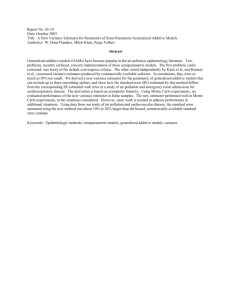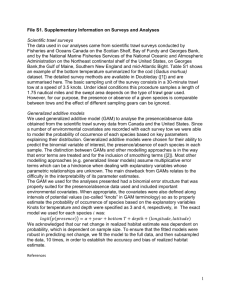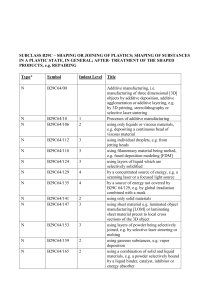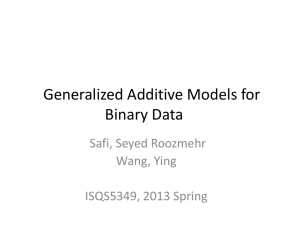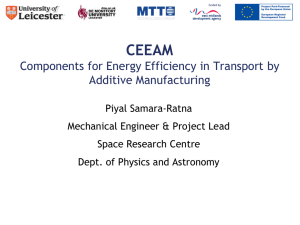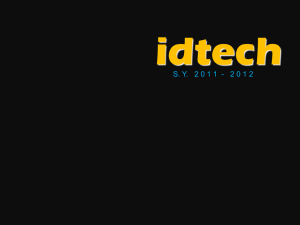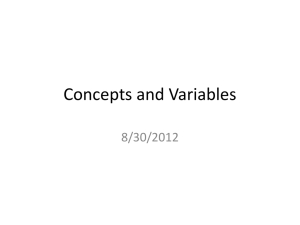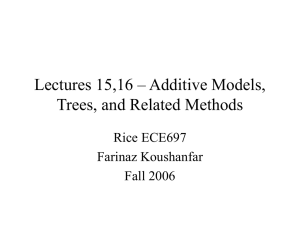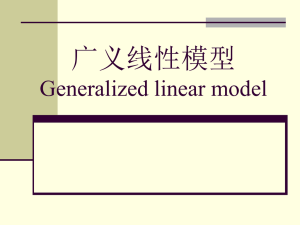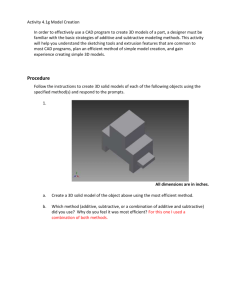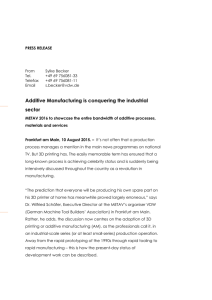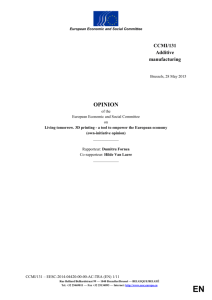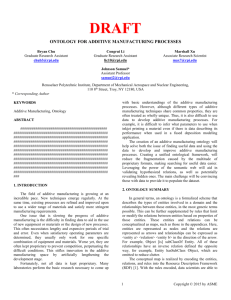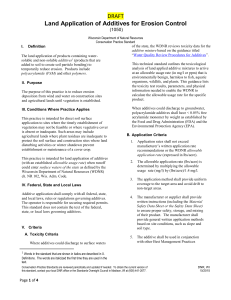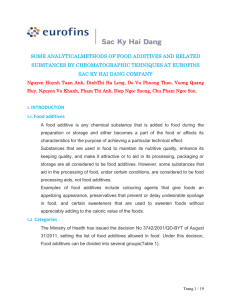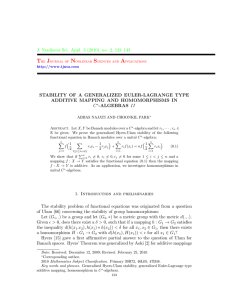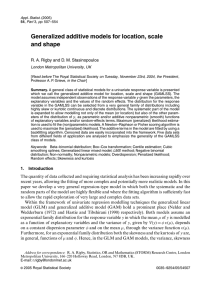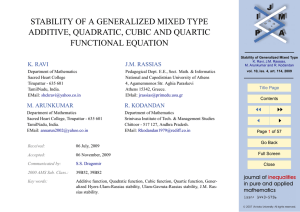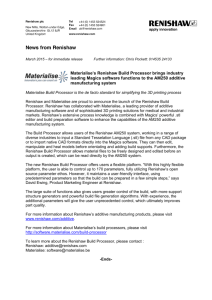Specification of the course for the Book of courses
advertisement
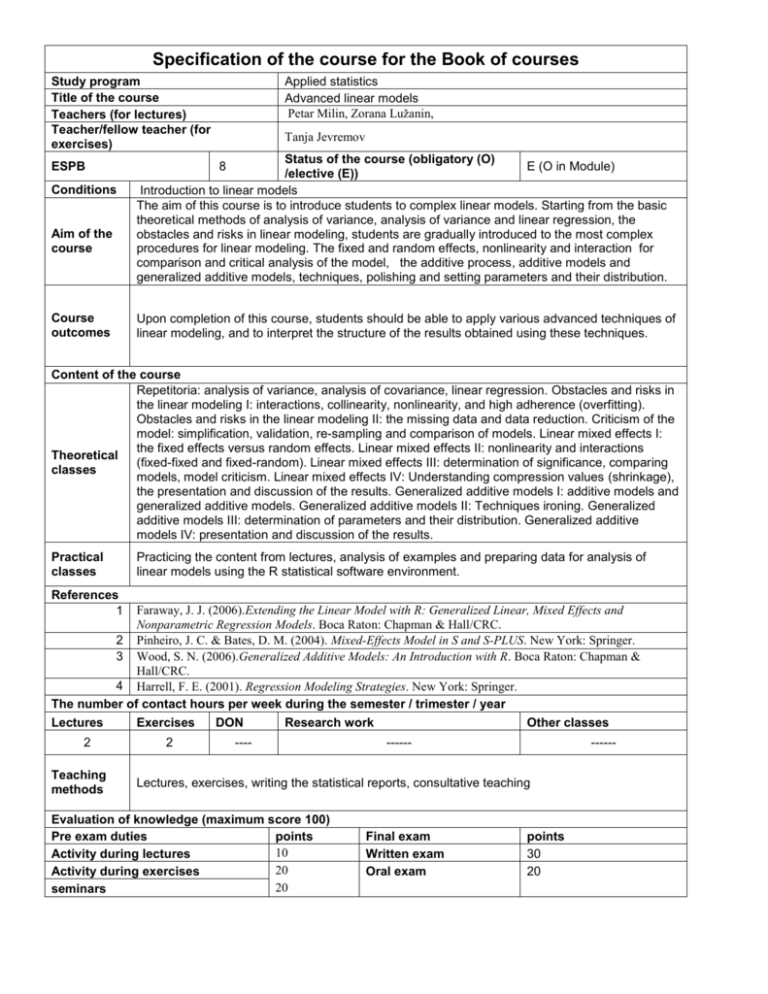
Specification of the course for the Book of courses Study program Title of the course Teachers (for lectures) Teacher/fellow teacher (for exercises) ESPB Conditions Aim of the course Course outcomes Applied statistics Advanced linear models Petar Milin, Zorana Lužanin, Tanja Jevremov Status of the course (obligatory (O) E (O in Module) /elective (E)) Introduction to linear models The aim of this course is to introduce students to complex linear models. Starting from the basic theoretical methods of analysis of variance, analysis of variance and linear regression, the obstacles and risks in linear modeling, students are gradually introduced to the most complex procedures for linear modeling. The fixed and random effects, nonlinearity and interaction for comparison and critical analysis of the model, the additive process, additive models and generalized additive models, techniques, polishing and setting parameters and their distribution. 8 Upon completion of this course, students should be able to apply various advanced techniques of linear modeling, and to interpret the structure of the results obtained using these techniques. Content of the course Repetitoria: analysis of variance, analysis of covariance, linear regression. Obstacles and risks in the linear modeling I: interactions, collinearity, nonlinearity, and high adherence (overfitting). Obstacles and risks in the linear modeling II: the missing data and data reduction. Criticism of the model: simplification, validation, re-sampling and comparison of models. Linear mixed effects I: the fixed effects versus random effects. Linear mixed effects II: nonlinearity and interactions Theoretical (fixed-fixed and fixed-random). Linear mixed effects III: determination of significance, comparing classes models, model criticism. Linear mixed effects IV: Understanding compression values (shrinkage), the presentation and discussion of the results. Generalized additive models I: additive models and generalized additive models. Generalized additive models II: Techniques ironing. Generalized additive models III: determination of parameters and their distribution. Generalized additive models IV: presentation and discussion of the results. Practical classes Practicing the content from lectures, analysis of examples and preparing data for analysis of linear models using the R statistical software environment. References 1 Faraway, J. J. (2006).Extending the Linear Model with R: Generalized Linear, Mixed Effects and Nonparametric Regression Models. Boca Raton: Chapman & Hall/CRC. 2 Pinheiro, J. C. & Bates, D. M. (2004). Mixed-Effects Model in S and S-PLUS. New York: Springer. 3 Wood, S. N. (2006).Generalized Additive Models: An Introduction with R. Boca Raton: Chapman & Hall/CRC. 4 Harrell, F. E. (2001). Regression Modeling Strategies. New York: Springer. The number of contact hours per week during the semester / trimester / year Lectures Exercises DON Research work Other classes 2 Teaching methods 2 ---- ------ ------ Lectures, exercises, writing the statistical reports, consultative teaching Evaluation of knowledge (maximum score 100) Pre exam duties points 10 Activity during lectures 20 Activity during exercises 20 seminars Final exam Written exam Oral exam points 30 20
